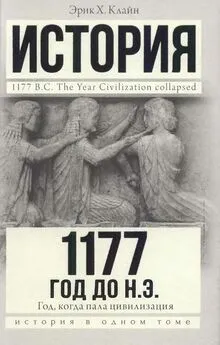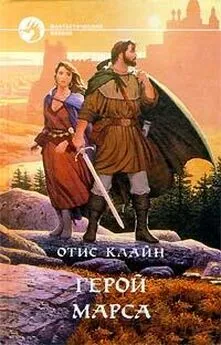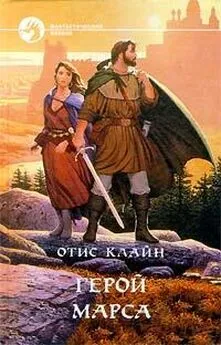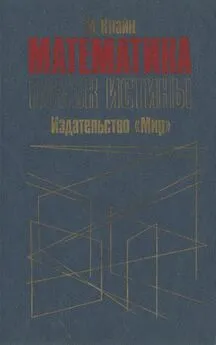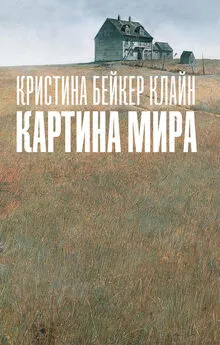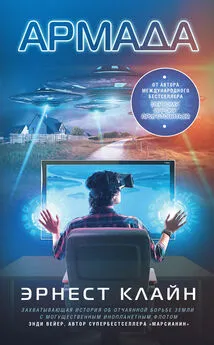Эрик Клайн - 1177 год до н. э. Год, когда пала цивилизация
- Название:1177 год до н. э. Год, когда пала цивилизация
- Автор:
- Жанр:
- Издательство:АСТ
- Год:2018
- Город:Москва
- ISBN:978-5-17-099337-6
- Рейтинг:
- Избранное:Добавить в избранное
-
Отзывы:
-
Ваша оценка:
Эрик Клайн - 1177 год до н. э. Год, когда пала цивилизация краткое содержание
Как это произошло? И кто был виновником этого масштабного всеохватывающего коллапса?
В своей книге Эрик Клайн, отвечая на эти вопросы, рассказывает нам захватывающую историю о том, как коллапс цивилизаций был вызван многочисленными взаимосвязанными неудачами, начиная от вторжения «народов моря» и восстания до землетрясений, засухи и сокращения международных торговых путей. Воплотив в жизнь яркий мультикультурный мир этих великих царств, он рисует широкую панораму империй и глобализованных народов позднего бронзового века и показывает, что именно их взаимозависимость ускорила их драматический крах.
1177 год до н. э. Год, когда пала цивилизация - читать онлайн бесплатно полную версию (весь текст целиком)
Интервал:
Закладка:
Diamond, J. 2005. Collapse: How Societies Choose to Fail or Succeed. New York: Viking.
Dickinson, 0.2006. The Aegean from Bronze Age to Iron Age. Continuity and Change between the Twelfth and Eighth Centuries BC. New York: Routledge.
Dickinson, O. 2010. The Collapse at the End of the Bronze Age. In The Oxford Handbook of the Bronze Age Aegean, ed. E.H. Cline, 483–90. New York: Oxford University Press.
Dietrich, M., and Loretz O. 1999. Ugarit, Home of the Oldest Alphabets. In Handbook of Ugaritic Studies, ed. W.G.E. Watson and N. Wyatt, 81–90. Leiden: Brill.
Dietrich, М., and Loretz 0.2002. Der Untergang von Ugarit am 21. Januar 1192 v. Chn? Der astronomisch-hepatoskopische Bericht KTU 1.78 (RS 12.061). Ugarit-Forschungen 34: 53–74.
Dorman, P. F. 2005a. Hatshepsut: Princess to Queen to Co-Ruler. In Hatshepsut: From Queen to Pharaoh, ed. C. Roehrig, 87–89. New Haven: Yale University Press.
Dorman, P F. 2005b. The Career of Senenmut. In Hatshepsut: From Queen to Pharaoh, ed. C. Roehrig, 107–9. New Haven: Yale University Press.
Dothan, M. 1971. Ashdod II–III. e Second and ird Season of Excavations 1963у 1965y Sounding in 1967. Text and Plates. ‘Atiqot 9–10. Jerusalem: Israel Antiquities Authority.
Dothan, M. 1993. Ashdod. In The New Encyclopedia of Archaeological Excavations in the Holy Land, ed. E. Stern, 93–102. Jerusalem: Carta.
Dothan, M., and Y. Porath. 1993. Ashdod V. Excavations of Area G. The Fourth-Sixth Season of Excavations 1968–1970. Atiqot 23. Jerusalem: Israel Antiquities Authority.
Dothan, T. 1982. The Philistines and their Material Culture. New Haven: Yale University Press.
Dothan, T. 1983. Some Aspects of the Appearance of the Sea Peoples and Philistines in Canaan. In Griechenlandy die Agjkis und die Levante w'ahrend der «Dark Ages», ed. Deger-Jalkotzy S., 99–117. Vienna: Osterreichische Akademie der Wissenschaft.
Dothan, T. 1990. Ekron of the Philistines, Part 1: Where They Came From, How They Settled Down and the Place They Worshiped In. Biblical Archaeology Review 18/1: 28–38.
Dothan, T. 1998. Initial Philistine Settlement: From Migration to Coexistence. In Mediterranean Peoples in Transition: thirteenth to Early Tenth Centuries BCE, ed. Gitin S., Mazar A., and Stern E., 148–61. Jerusalem: Israel Exploration Society.
Dothan, T. 2000. Reflections on the Initial Phase of Philistine Settlement. In The Sea Peoples and their World: A Reassessment, ed. E.D. Oren, 146–58. Philadelphia: University of Pennsylvania.
Dothan, T, and Dothan M. 1992. People of the Sea: the Search for the Philistines. New York: Macmillan Publishing Company.
Drake, B. L. 2012. The Influence of Climatic Change on the Late Bronze Age Collapse and the Greek Dark Ages.Journal of Archaeological Science 39: 1862–70.
Drews, R. 1992. Herodotus 1.94, the Drought ca. 1200 B.C., and the Origin of the Etruscans. Historia 41: 14–39.
Drews, R. 1993. The End of the Bronze Age: Changes in Warfare and the Catastrophe ca. 1200 B.C. Princeton, NJ: Princeton University Press.
Drews, R. 2000. Medinet Habu: Oxcarts, Ships, and Migration theories. Journal of Near Eastern Studies 59: 161–90.
Durard, J. — M. 1983. Textes administratifs des salles 134 et 160 du Palais de Mari. ARMT XX. Paris: Librairie Orientaliste Paul Geuthner.
Edel, E. 1961. Ein kairener fragment mit einem Bericht tiber den libyerkrieg Merneptahs, Zeitschri fiir Agyptische Sprache und Altertumskunde 86: 101–3.
Edel, E. 1966. Die Ortsnamenlisten ausdem TotentempelAmenophisIIL Bonn: Peter Hanstein Verlag.
Edel, E., and Gorg M. 2005. Die Ortsnamenlisten im nordlichen Smlenhof des Totentem — pels Amenophis’ III. Wiesbaden: Harrassowitz Verlag.
Edgerton, W. E, and J. A. Wilson. 1936. Historical Records of Ramses III: the Texts in Medinet Habu. Vols. 1 and 2. Chicago: University of Chicago Press.
Emanuel, J. P. 2013. «SRDN ivom the Sea»: the Arrival, Integration, and Acculturation of a «Sea People.» Journal of Ancient Egyptian Interconnections 5/1, 14–27.
Enverova, D. A. 2012. The Transition from Bronze Age to Iron Age in the Aegean: An Heterarchical Approach. M.A. thesis, Bilkent University.
Ertekin, A., and Ediz I. 1993. The Unique Sword from Bogazkoy/Hattusa. In Aspects of Art and Iconography: Anatolia and Its Neighbors. Studies in Honor of Nonet Ozguc, ed. M. J. Mellink, E. Porada, and T. Ozguc, 719–25. Ankara: Tiirk Tarih Kurumu Basimevi.
Evans, A. J. 1921–35. The Palace of Minos at Knossos. Vols. 1–4. London: Macmillan and Co.
Fagles, R. 1990. Homer: the Iliad. New York: Penguin.
Faust, A., and Lev-Tov J. 2011. The Constitution of Philistine Identity: Ethnic Dynamics in Twelfth to Tenth Century Philistia. OxfordJournal of Archaeology 30: 13–31.
Feldman, M. 2002. Luxurious Forms: Redefining a Mediterranean «International Style,» 1400–1200 B.C.E. Art Bulletin 84/1: 6–29.
Feldman, M. 2006. Diplomacy by Design: Luxury Arts and an «International Style» in the Ancient Near East, 1400–1200 BCE. Chicago: University of Chicago Press.
Feldman, M. 2009. Hoarded Treasures: e Megiddo Ivories and the End of the Bronze Age. Levant 41/2: 175–94.
Finkelstein, I. 1996. The Stratigraphy and Chronology of Megiddo and Beth-Shean in the 12th–11th Centuries BCE. Tel Aviv 23: 170–84.
Finkelstein, I. 1998. Philistine Chronology: High, Middle or Low? In Mediterranean Peoples in Transition: Thirteenth to Early Tenth Centuries ВСЕ, ed. S. Gitin, A. Mazar, and Е. Stern, 140–47. Jerusalem: Israel Exploration Society.
Finkelstein, I. 2000. The Philistine Settlements: When, Where and How Many? In The Sea Peoples and their World: A Reassessment, ed. E.D. Oren, 159–80. Philadelphia: University of Pennsylvania.
Finkelstein, 1.2002. El-Ah.wat: A Forti ed Sea People City? Israel Exploration Journal 52/2: 187–99.
Finkelstein, I. 2007. Is the Philistine Paradigm Still Viable? In The Synchronisation of Civilisations in the Eastern Mediterranean in the Second Millennium В. C. Ill, Proceedings of the SCIEM2000–2nd EuroConference, Vienna, 28th of May–1st of June 2003, ed. M. Bietak and E. Czerny, 517–23. Vienna: Verlag der Osterreichischen Akademie der Wissenschaften.
Fitton, J. L. 2002. Minoans. London: British Museum Press.
Frank. A. G. 1993. Bronze Age World System and Its Cycles. Current Anthropology 34: 383–429.
Frank, A. G., and B.K. Gillis. 1993. e World System: Five Hundred Years or Five Thousand? London: Routledge.
Frank, A. G., and Thompson W.R. 2005. Afro-Eurasian Bronze Age Economic Expansion and Contraction Revisited. Journal of World History 16: 115–72.
Franken, H. J. 1961. The Excavations at Deir Alla, Jordan. Vetus Testamentum 11:361–72.
French, E. 2009. The Significance of Changes in Spatial Usage at Mycenae. In Forces of Transformation: The End of the Bronze Age in the Mediterranean, ed. C. Bachhuberand R.G. Roberts, 108–10. Oxford: Oxbow Books.
French, E. 2010. Mycenae. In The Oxford Handbook of the Bronze Age Aegean, ed. E.H. Cline, 671–79. New York: Oxford University Press.
Friedman, К. E. 2008. Structure, Dynamics, and the Final Collapse of Bronze Age Civilizations in the Second Millennium. In Historical Transformations: the Anthropology of Global Systems, ed. K. E. Friedman and J. Friedman, 163–202. Lanham, MD: Altamira Press.
Galil, G., A. Gilboa, Maeir A. M., and Kahn D., eds. 2012. The Ancient Near East in the 12th–10th Centuries BCE: Culture and History. Proceedings of the International Conference Held at the University of Haifa, 2–5 May, 2010. AOAT 392. Miinster: Ugarit-Verlag.
Genz, H. 2013. «No Land Could Stand before their Arms, from Hatti… On…»? New Light on the End of the Hittite Empire and the Early Iron Age in Central Anatolia. In The Philistines and Other u Sea Peoples» in Text and Archaeology, ed. Killebrew A. E. and Lehmann G., 469–77. Atlanta: Society of Biblical Literature.
Gilboa, А. 1998. Iron I — НА Pottery Evolution at Dor — Regional Contexts and the Cypriot Connection. In Mediterranean Peoples in Transition: Thirteenth to Early Tenth Centuries BCE, ed. S. Gitin, A. Mazar, and E. Stern, 413–25. Jerusalem: Israel Exploration Society.
Gilboa, A. 2005. Sea Peoples and Phoenicians along the Southern Phoenician Coast — A Reconciliation: An Interpretation of Sikila (SKL) Material Culture. Bulletin of the American Schools of Oriental Research 337: 47–78.
Gilboa, A. 2006–7. Fragmenting the Sea Peoples, with an Emphasis on Cyprus, Syria and Egypt: A Tel Dor Perspective. Scripta Mediterranea 27–28: 209–44.
Gillis, C. 1995. Trade in the Late Bronze Age. In Trade and Production in Premonetary Greece: Aspects of Trade, ed. C. Gillis, C. Risberg, and B. Sjoberg, 61–86. Jonsered: Paul Astrom Forlag.
Gilmour, G., and Kitchen K.A. 2012. Pharaoh Sety II and Egyptian Political Relations with Canaan at the End of the Late Bronze Age. Israel Exploration Journal 62/1: 1–21.
Gitin, S. 2005. Excavating Ekron. Major Philistine City Survived by Absorbing Other Cultures. Biblical Archaeology Review 31/6: 40–56, 66–67.
Giveon, R., Sweeney D., and Lalkin N. 2004. The Inscription of Ramesses III. In The Renewed Archaeological Excavations at Lachish (1973–1994), ed. D. Ussishkin, 1626–28. Tel Aviv: Tel Aviv University.
Grundon, I. 2007. The Rash Adventurer: A Life of John Pendlebury. London: Libri Publications.
Giiterbock, H. G. 1992. Survival of the Hittite Dynasty. In e Crisis Years: the 12th Century B.C., ed. W.A. Ward and M.S. Joukowsky, 53–55. Dubuque, IA: Kendall/ Hunt Publishing Co.
Habachi, L. 1972. The Second Stele ofKamose. Gluckstadt: J. J. Augustin.
Halpern, B. 2006–7. The Sea-Peoples and Identity. Scripta Mediterranea 27–28: 15–32.
Hankey, V. 1981. The Aegean Interest in El Ататъ. Journal of Mediterranean Anthropology and Archaeology 1: 38–49.
Harrison, T. P. 2009. Neo-Hittites in the «Land of Palistin». Renewed Investigations at Tell Ta’ymat on the Plain of Antioch. Near Eastern Archaeology 72/4: 174–89.
Harrison, T. P. 2010. The Late Bronze/Early Iron Age Transition in the North Orontes Valley. In Societies in Transition: Evolutionary Processes in the Northern Levant between Late Bronze Age II and Early Iron Age. Papers Presented on the Occasion of the 20th Anniversary of the New Excavations in Tell Afis. Bologna, 15th November 2007, ed. F. Venturi, 83–102. Bologna: Clueb.
Hawass, Z. 2005. Tutankhamun and the Golden Age of the Pharaohs. Washington, DC: National Geographic Society.
Hawass, Z. 2010. King Tut’s Family Secrets. National Geographic, September 2010, 34–59.
Hawass, Z., et al. 2010. Ancestry and Pathology in King Tutankhamun’s Family. Journal of the American Medical Association 303/7 (2010): 638–47.
Hawkins, J. D. 2009. Cilicia, the Amuq and Aleppo: New Light in a Dark Age. Near Eastern Archaeology 72/4: 164–73.
Hawkins, J. D. 2011. e Inscriptions of the Aleppo Temple. Anatolian Studies 61: 35–54.
Heimpel, W. 2003. Letters to the King of Mari: A New Translation, with Historical Introduction, Notes, and Commentary. Winona Lake, IN: Eisenbrauns.
Heltzer, M. 1988. Sinaranu, Son of Siginu, and the Trade Relations between Ugarit and Crete. Minos 23: 7–13.
Heltzer, M. 1989. The Trade of Crete and Cyprus with Syria and Mesopotamia and their Eastern Tin-Sources in the XVIII–XVII Centuries B.C. Minos 24: 7–28.
Hirschfeld, N. 1990. Incised Marks on LH/LM III Pottery. M.A. thesis, Institute of Nautical Archaeology, Texas A&M University.
Hirschfeld, N. 1992. Cypriot Marks on Mycenaean Pottery. In Mykenaika: Actes du IXe Colloque international sur les textes myceniens et egeens, Athenes, 2–6 octobre 1990, ed. J. — P. Olivier, 315–19. Paris: Diffusion de Bocard.
Читать дальшеИнтервал:
Закладка:
